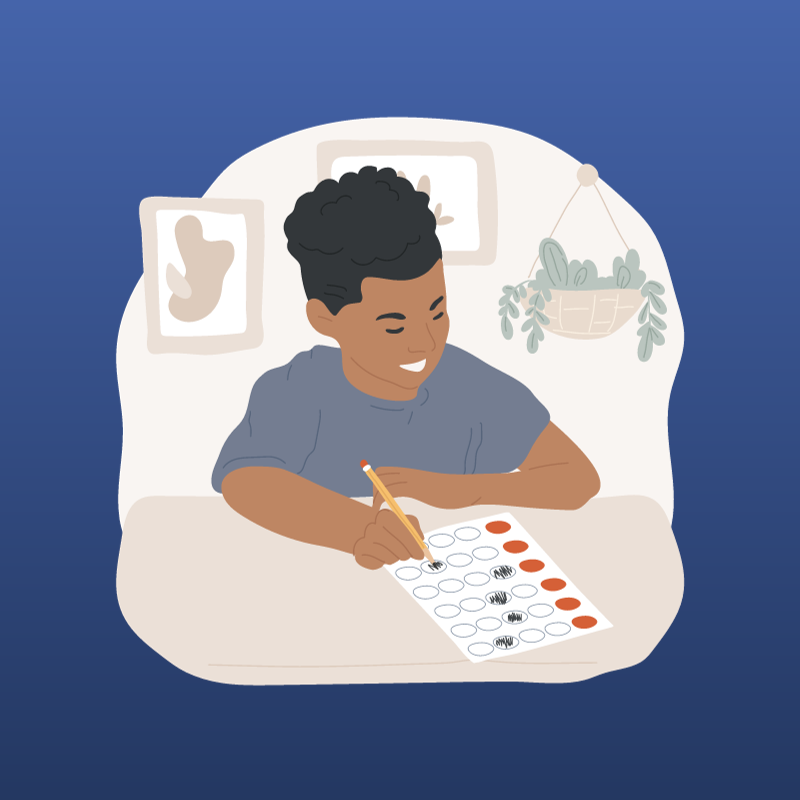Summer is the Time to Plan for the SSAT and/or ISEE

Applying to a competitive middle or high school can be stressful for both students and parents. For many students, the SSAT (Secondary School Admission Test) or ISEE (Independent School Entrance Examination) is their first encounter with high stakes testing. To make the process less stressful and much more successful, we highly recommend that you use this summer to make a plan and then start SSAT/ISEE testing in the fall. Here are some tips to get you started.
SSAT or ISEE?
Unlike college admissions, where schools do not prefer one test over another, many independent schools are aligned with only one test. This is often determined by region, but there are plenty of metro areas where both the SSAT and ISEE are popular with schools.
Before practicing for either test, check with the admissions office for the schools you’re interested in and see which test or tests they accept. Ideally, we would recommend not taking both tests, but depending on the schools you’re applying to, it may be a necessity.
Let’s say that your student is applying to a school that takes both tests. Which test makes sense? To generalize, the SSAT is a better test for students stronger in language arts, as the reading passages include poetry and older prose, and the verbal section tests a wide range of vocabulary. Conversely, the ISEE is a better test for those stronger in math, as the mathematical achievement section tests concepts that extend well beyond grade-level standards.
How and when should your student test?
During the pandemic, both the SSAT and ISEE began to offer “at-home” testing where students use their computers to take the test via a secure testing platform. Both tests have continued to offer the at-home option while also offering in-person, paper-based testing.
Regardless of how a student tests, the structure and scoring will be the same, as neither SSAT nor ISEE have implemented adaptive testing similar to the GRE, MCAT, or forthcoming digital SAT.
When students can test varies greatly between the two tests. The ISEE has three testing seasons–fall (August – November), winter (December – March), and spring/summer (April-July)--and students can only test once per season. The spring season is usually after fall admission deadlines, so that means students can only take the ISEE twice per admission cycle.
The SSAT offers many more opportunities to take the test, with monthly in-person tests starting in October. Additionally, a student can take an at-home test three times per academic year and take on flex test, which can be scheduled on-demand.
We recommend that students plan to take their first test by November. This allows ample time for any retesting before applications are due in late January or early February. This is especially true for the ISEE, as it’s the last opportunity during the fall season.
Which scores really matter to school?
Both the SSAT and ISEE offer scaled scores and percentiles, with the ISEE also offering a Stanine score from 1 to 9.
For the SSAT, schools only care about the percentiles, and the score reports sent to schools also ranks each student amongst applicants to that specific school. For the ISEE, many schools used the Stanine scores, as they are essentially a simplified version of percentiles.
It’s important to recognize that the percentiles do not reflect a nationwide ranking, as they only include the well-prepared pool of applicants taking the SSAT or ISEE. Many times, families are surprised that their all-As student scores in the 50th percentile.
The SSAT and ISEE are not well aligned with many schools’ curriculum, and a middle school student has likely never seen a test like this. These tests can be stressful and unfamiliar to many student and taking the test blind rarely sets up students to do their best.
What can we do now to plan for the SSAT/ISEE?
The good news is that the summer before the fall tests is the perfect time to start preparing.
Both tests explicitly test vocabulary, so encouraging your student to study vocab over the summer is a great starting point. Freerice.com is a great resource for synonym practice and every correct answer donates food to an international food bank.
Making sure students keep up with reading is also important. This can be a mix of classics and contemporary magazine articles. Finally, many students feel a summer slump in math, so keeping those skills well tuned will pay great dividends. Our Academic Tutors are a great resource for students who are looking to catch up or get ahead in any of these areas this summer.
Neither test allows students to use a calculator, so even practicing some arithmetic over the summer can do a lot of good.
Just as we would recommend for any rising junior about to start college admissions, students should take a practice test to determine their starting score and fine tune where they’ll need to study. To build your student’s personalized plan, schedule a consultation with an Applerouth Advisor.
Questions? Need some advice? We're here to help.
.webp)

Take advantage of our practice tests and strategy sessions. They're highly valuable and completely free.





